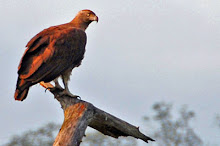Marco Polo- The Customs of Kingdoms of Malabar Coast, India ~1290AD
The Malabar Coast, Kerala, 13th century India.
Marco Polo[1254-1324], a Merchant from Venice, at the age of 17 set off on a 24 year odessey across Asia,(estimated to be around 24,000km!) with his merchant father and uncle. His accounts, boldly titled "Description of the World", revealed to the Europeans places never before described, or even dreamed of, and profoundly influenced centuries of exploration and imagination, (including that of Columbus, Vasco Da Gama et al.).
This is now seen as a blend of correct careful information and some stuff from figment of imagination, that got into his descriptions.
(More here:National Geographic magazine- May& June,2001.Special Feature on Marco Polo's adventures.
http://ngm.nationalgeographic.
This is now seen as a blend of correct careful information and some stuff from figment of imagination, that got into his descriptions.
(More here:National Geographic magazine- May& June,2001.Special Feature on Marco Polo's adventures.
http://ngm.nationalgeographic.
This was a Kerala before Kathakali was born,
And before Thakkaali (Tomato) was known! ;))
It was a land without Coffee or Tea..
As they were centuries away from arriving by Sea! ;))
Indeed, the whole Known World of The West n The East..
Hadn't yet known how Papaya or Pineapple, taste;
Neither ever heard of 'Chilli Peppers', Potato, Tomato,
Nor of Cassava, Corn or Cocoa!
As they had to wait for Columbus & Conquistadors..
Sailing to the unknown world of the Americas, &into power corridors.
{ Note:
It was almost 200years after this journey of Marco Polo, that Columbus started his journey to find the sea route to India and reached the Americas, though he always insisted it was part of Asia. Columbus was inspired by Marco Polo's book, and he had his own copy of it.
Tomato, Potato, Papaya, Pineapple, Cassava, 'Chilli Peppers', Corn, Cocoa are all originally from Central or South America, and were known to the rest of the world only after Columbus' voyages starting from 1492.
Coffee is known to originate in Ethiopia, and spread through Arabia. The earliest credible evidence of coffee drinking appears in the middle of the 15th century, in the Sufi monasteries of Yemen in southern Arabia.[Source: wikipedia]
Tea plant is native to the areas around NorthEast India, Southwest China/Tibet. But Tea was not popular in other parts of India or the west until Chinese trade with Europeans spread it in 19th century.
}
-On Clothing.
-Of idol worship. Of the custom of 'not killing' Ox. Of worshipping the Ox.
Of Kings who sit on the earth.
Of people who supposedly killed St Thomas (1 of the 12 Apostles of Jesus, who spread Christianity on this Coast,in 1st century)
Of Kings who sit on the earth.
Of people who supposedly killed St Thomas (1 of the 12 Apostles of Jesus, who spread Christianity on this Coast,in 1st century)
-Of Eating, Drinking, and Washing.
Of Saracens ( as Muslims were referred to by the Europeans, then)
Of Saracens ( as Muslims were referred to by the Europeans, then)
-Of a King's Justice, and of his Debts to a Foreign Merchant.
-Of reading Omens in everything from sneezing, and seeing birds and animals ;).
[After 700+years, I guess, we are still not very far from it! ;)) ]
[After 700+years, I guess, we are still not very far from it! ;)) ]
-Of reading Omens from house-lizards/Geckos &Spiders ;)
Of Astrologers and Diviners.
Of how Boys, when they are 13, are trained to fend for themselves and learn to Trade,
as they are denied meals from home!!.
Of Astrologers and Diviners.
Of how Boys, when they are 13, are trained to fend for themselves and learn to Trade,
as they are denied meals from home!!.
-Of Birds,
and of Girls offered to the idols to sing and dance and entertain the idols ;)
and of Girls offered to the idols to sing and dance and entertain the idols ;)
-Of What Maidens do in the Temples!!
-Of maidens singing and dancing to make the God reconcile with the goddess
-Of Coconuts.
Of the tomb of St Thomas, and that it was a pilgrim site for both Christians and Muslims of that era!.
Of the tomb of St Thomas, and that it was a pilgrim site for both Christians and Muslims of that era!.
{The upper half talks about another kingdom, Motupalli, Marco says 1000miles north of Malabar. This seems to be in Andhra Pradesh[near Chirala, known for its handloom textiles, which once traded through the ancient port of Motupalli, now an obscure village. There, Marco talks about "clothes of finest texture and highest value; There is no king or queen in the world who would not gladly wear a fabric of suc delicacy and beauty". (Then returns to the description of Malabar) }
Of the place of the tomb of St Thomas' and Miracle of the Saint.
 |
| The Darkest Man is the most highly esteemed, and considered better than others. |
--Of Brahmin Traders, who would not tell a lie..



























